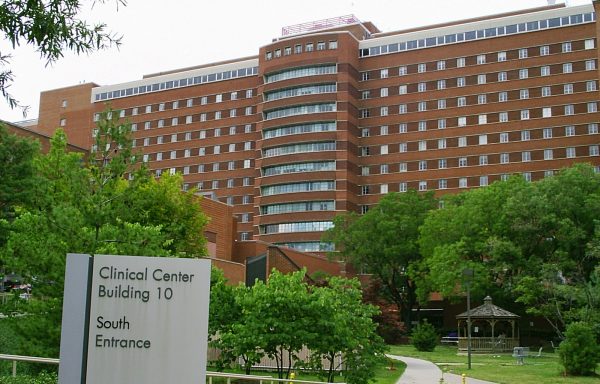
One of the most memorable moments during the 2008 presidential election was when vice presidential candidate Sarah Palin ridiculed government funding for fruit fly research as a waste of taxpayers’ money.
What Palin apparently didn’t know was that when they’re not evading death by rolled-up newspaper, fruit flies are critical for scientific research, including research relevant to human disease. Although Palin never became vice president, the screeching banshee of willful ignorance that she recklessly invoked continues to haunt Washington. On Monday, the same shrieking specter manifested again to foretell the death of brain cells as President Trump unveiled a $4.8 trillion budget for 2021 that would cut funding for the National Institutes of Health by more than $3 billion, to $38 billion, even though he had increased it in his 2020 budget. Meanwhile, the Food and Drug Administration would get a 4.5% funding increase.
Granted, the cuts are unlikely to pass the Democrat-controlled House, and generous funding for the NIH has consistently enjoyed bipartisan support despite Trump’s past proposals to cut it. But the irony of cutting funding for the NIH while raising it for the FDA is that without the NIH, there wouldn’t be a whole lot of new drugs for the FDA to approve in the first place. The very suggestion of cutting the NIH’s funding indicates a failure to appreciate the cruciality to drug discovery and development of the basic research the NIH conducts and supports.
Recall the scene in the 2006 movie “The Devil Wears Prada” when Miranda (Meryl Streep) upbraids Andrea (Anne Hathaway) for her disdain toward fashion, lecturing her about the millions of dollars and countless jobs behind her ostensibly quotidian decision to wear a lumpy blue sweater that’s not just blue, but actually cerulean. Just as the cerulean sweater is the product of vast amounts of money and labor, the journey a drug takes before reaching the market is not smooth and linear, but fraught with risk and circuitous, with multiple inputs from scientists whose basic research could lead to a dead end just as easily as it could to a medical breakthrough, or both.
To give one example, in 1995 a group of researchers under an NIH grant at Boston’s Brigham and Women’s Hospital published findings in the journal Immunity from a study in mice showing that a protein expressed in T cells called CTLA-4 played an important role in the activation of T cells and the immune system. Whatever potential therapeutic application those scientists may have foreseen at the time, there’s no way they or Canadians doing similar research could have predicted that 16 years later, the FDA would approve Yervoy (ipilimumab), an immunotherapy drug from Bristol-Myers Squibb that targets CTLA-4 and is used to treat melanoma, kidney and colorectal cancer.
It’s not just Yervoy, either. Published research supporting all of the 210 drugs that the FDA approved between 2010 and 2016 benefited from more than $100 billion in NIH funding over multiple decades, according to a 2018 paper by researchers at Bentley University, in the journal Proceedings of the National Academy of Sciences. Most of that research, the authors wrote, was focused not on the drugs themselves, but on their biological targets. In other words, while the private sector spends an average of $1.4 billion out of pocket to develop each drug that reaches the market, it’s NIH-funded basic research that makes that investment possible.

Solving Healthcare’s Provider Data Problem Starts with Interoperability
Break down the silos. Take control of your provider data.
The drugs listed in the study cover a wide range of disease states, including cancers, autoimmune disorders, diabetes, viral infections and more. They include medicines that have saved countless lives: Gilead Sciences’ hepatitis C cure Sovaldi (sofosbuvir); BMS and Merck’s cancer immunotherapy drugs Opdivo (nivolumab) and Keytruda (pembrolizumab) and more. And many of those drugs generate annual sales in the billions of dollars. While there’s plenty of room for discussion about their costs, one thing is for certain: Without funding for basic research by the NIH and other government agencies, a lot of those drugs likely wouldn’t exist.
NIH funding has enjoyed bipartisan support in Congress despite Trump’s desire to cut it, and that’s unlikely to change. But what’s needed is a greater appreciation for the role that basic research plays in the medicines that Americans take for granted and recognition of the foolishness of assuming that private industry and philanthropy will suddenly step in should some politician deprive that research of government funding.
And as silly as it might sound to some people, some of that basic research may even involve fruit flies.
Photo: National Institutes of Health








